We describe in detail about the pros and cons of the roof of the slate, metal tiles, bitumen sheets and bitumen tiles, and choose the best.
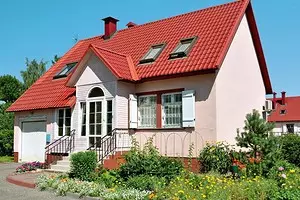

3 questions to which you need to answer before choosing a roof
1. What should be the service life of the roofing coating?
For the summer cottage, it is unlikely to be expensive and super strike material, but for the home of permanent residence you need this necessity.2. What loads will be?
It is important to take into account the loads that will have the roof itself on the supporting structures of the house, a lot of snow cover and wind. The roofs of heavy ceramic or cement-sand tile may require calculation and use of a rafted with an increased cross section.
3. What are the features of the installation of each option?
For example, light bitumen tiles are laid only on a solid base. It means that the moisture-resistant OSP or Plywood of the FSF brand will be required, and, accordingly, the cost will increase. At the same time, this material is most convenient on the roofs of complex forms. In any case, to assess the cost of arranging the fifth facade, it is more correct to compare not the cost of individual roofing coatings, but the cost of roofing systems in general.
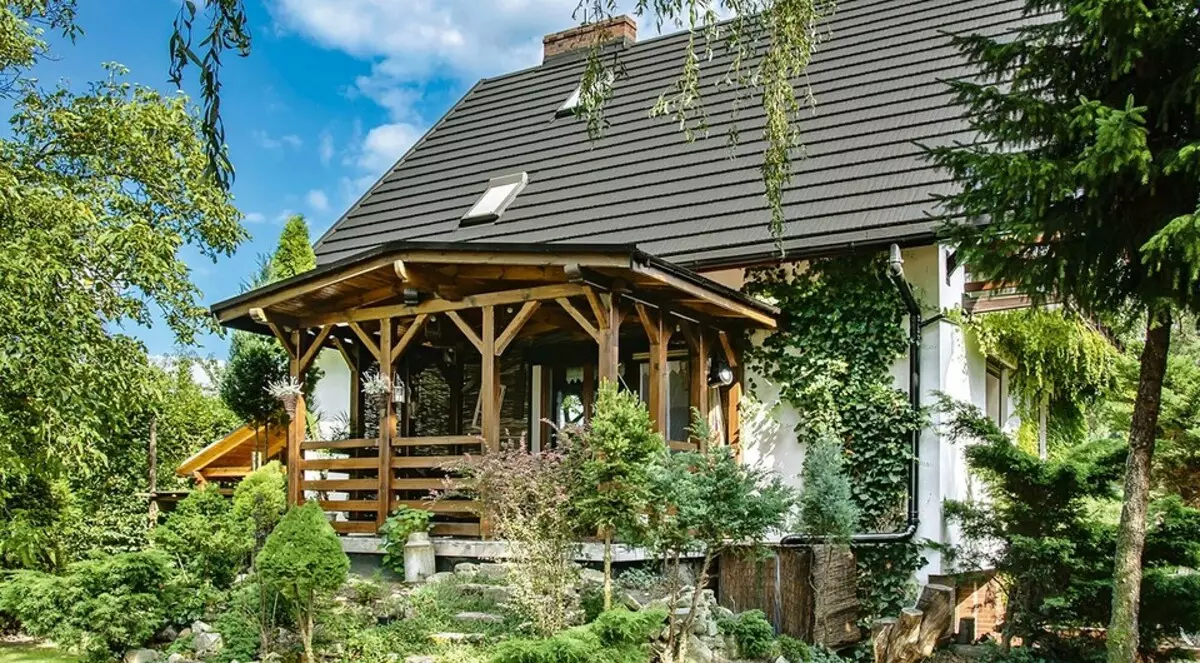
Installation of roofing material on a simple duplex roof - the fastest and inexpensive: from 150 rubles / m²
Roofing system elements
- Roofing with the necessary components.
- Dooming, the design of which determines the type of roofing material, and the contractor.
- Waterproofing - protection of wooden elements of the rafter system and thermal insulation from moisture from the outside.
- Thermal insulation - supports comfortable temperature in the house.
- Parosolation is the protection of the wooden elements of the rafter system and thermal insulation from moisture from the inside of the house.
- Elements of ventilation - connect the underfloor space with an external one.
- Engineering communications - ventilation, antennas, chimneys, etc.
- Snove keepers - warn avalanche-like snow from a roof.
- Stairs, fences and other elements - for safe maintenance of roofing and engineering communications.
- The drainage system - organizes the removal of water from the skates, does not allow it to fall on the facade and the break, prevents the destruction of the structures.
- Miscellenses - gives roof a aesthetic appearance.
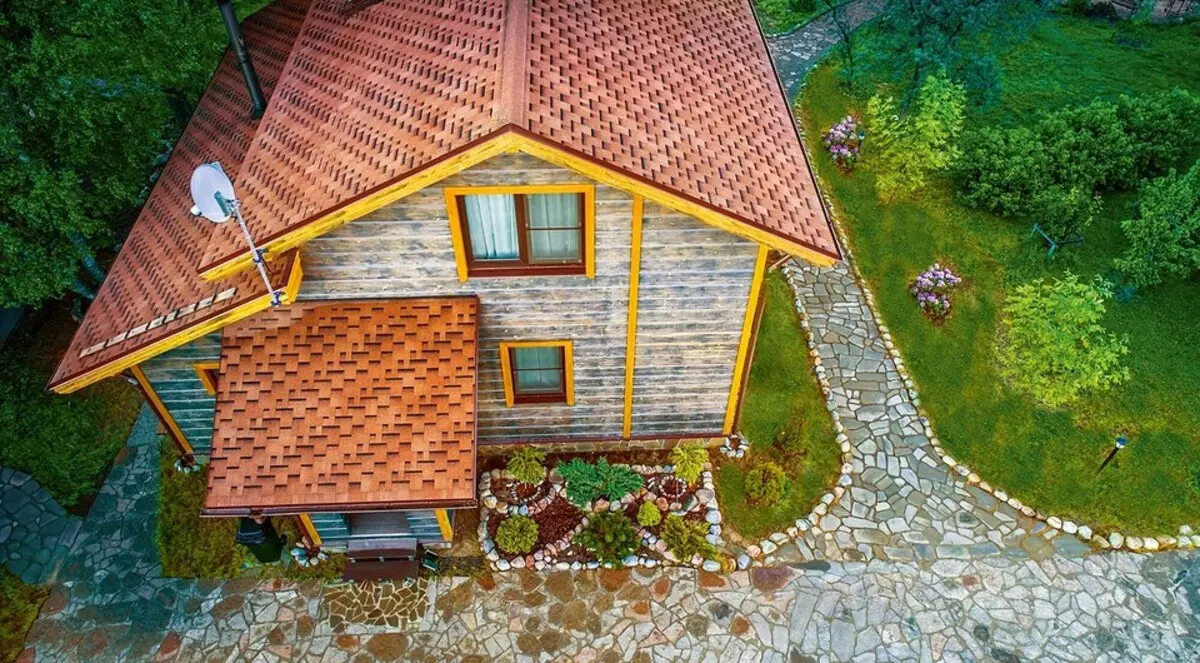
Types of roofing
Roofing from slate
Wavy roofing sheets have proven themselves as roofing. Produce slate from three components. This cement, water and natural mineral asbestos, or rather, one of its numerous species is chrysotyl, which reinforces cement mortar. The term "asbestos" combines a group of minerals with similar properties, but with a different chemical composition, and chrysotile is the safest of them.
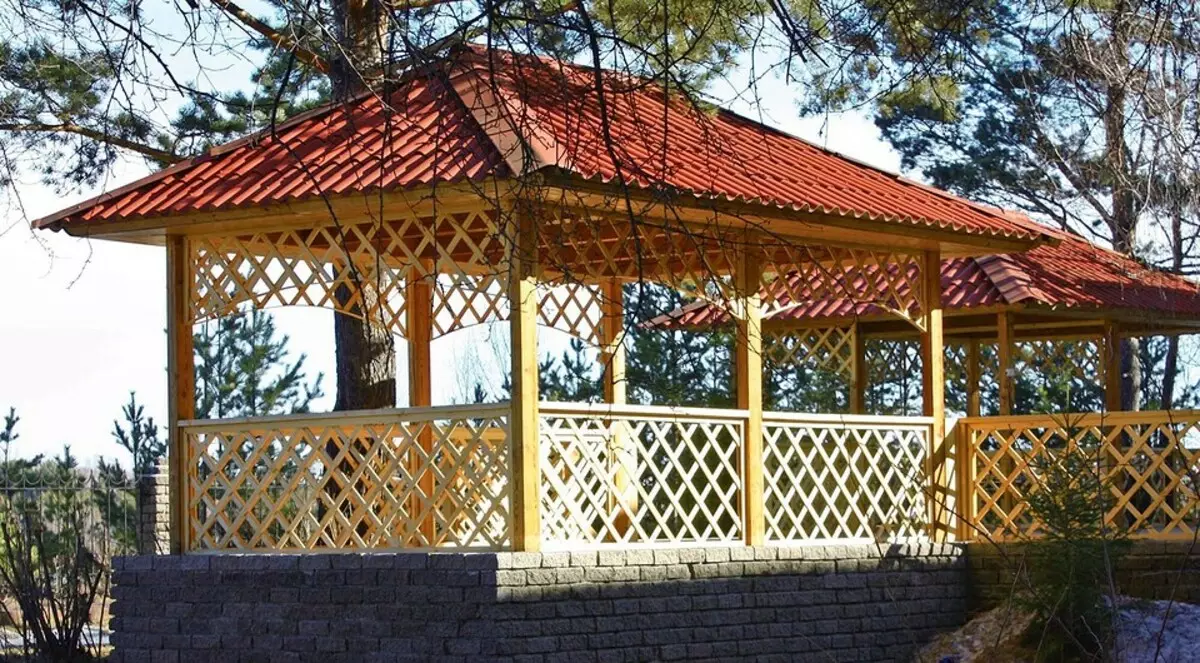
Slate is one of the few roofing materials that does not support and does not distribute the fire and withstands heating to 600 ° C
The roofing slate is a wavy sheets of 980-1130 mm wide, a length of 1750 mm, a thickness of 4.8-5.8 mm. The number of waves on the sheet: from six to eight. In addition to the unpainted gray slate today, they produce color: blue, green, brown and red. Painted material material more racks to negative weather impacts. In our market, this kind of roof is represented by many companies - this is a "Bryansk asbestos-cement plant", "Wave Combine", "Skai", "Fiburk". One of the main competitive advantages of slate is the low cost of 1 m² - 120-280 rubles. This material covers the roofs with a bias from 10% or more. The cost of work is small - from 200 rubles. For 1 m².
pros
- Water and Morozonotk
- It has low thermal conductivity, helps to keep warm in the house.
- It has good sound insulation qualities, muffles the noise of rain.
- Sufficiently durable and reliable.
- Fireproof.
- Low cost material and roof service.
- Repairability, permissible to restore the coating at local damage.
- Service life for at least 30 years.
Minuses
- Sheets are fragile, transportation and installation require careful and accurate circulation.
- Differs not too presentable views.
- Suitable for roofs of simple forms.
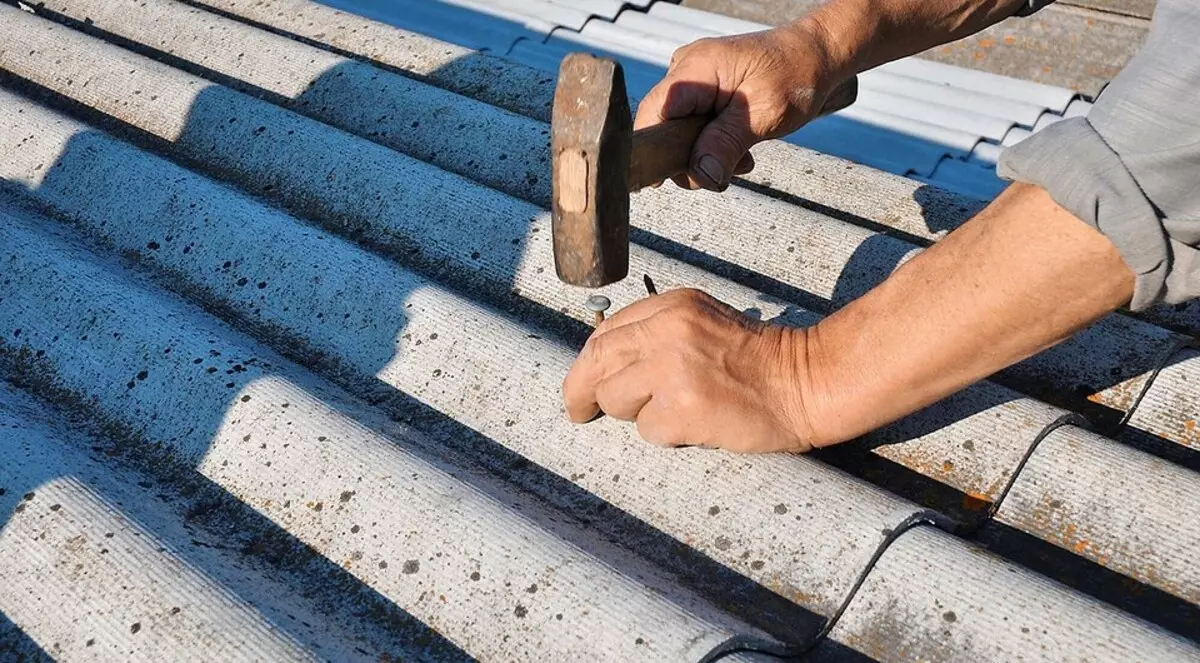
The cutter under the slate is performed from bars with a cross section of at least 60 × 60 mm. Mounted sheets with horizontal rows from the bottom up. Top row
Must find to the lower by 120-200 mm. The holes for fasteners are drilled in advance with a diameter of 2-3 mm larger than the diameter of the slate nail
Roofing from metal tileage
Metal tile is made of thin-sheet steel with a thickness of 0.40-0.55 mm (less often to 0.7 mm). In its production, it is coated with zinc or zinc alloy with aluminum, passivated, apply a layer of soil, then a polymer coating on the front side, and a protective lacquer. Profiling increases the rigidity of the roofing sheet, and visually it becomes similar to the roof relief from the clay tiles. On our market is a metal tile with different types of polymer coatings (polyester, plastisol, polyurethane, PDF, etc.). Materials of the company "Metal Profile", "Unicam", Grand Line, Ruukki, Stynergy. The cost of 1 m² ranges from 297 to 800 rubles. Steel for a sheet can be domestic and foreign production. The length of the sheets indicate when ordering.
Pay attention to the thickness of steel metal tile: what it is more, the better. Learn the amount of zinc that protects the metal from corrosion. Its content can be from 140 to 275 g / m². These characteristics determine the service life of the metal roof. The cost of installation is from 200 rubles. For 1 m².
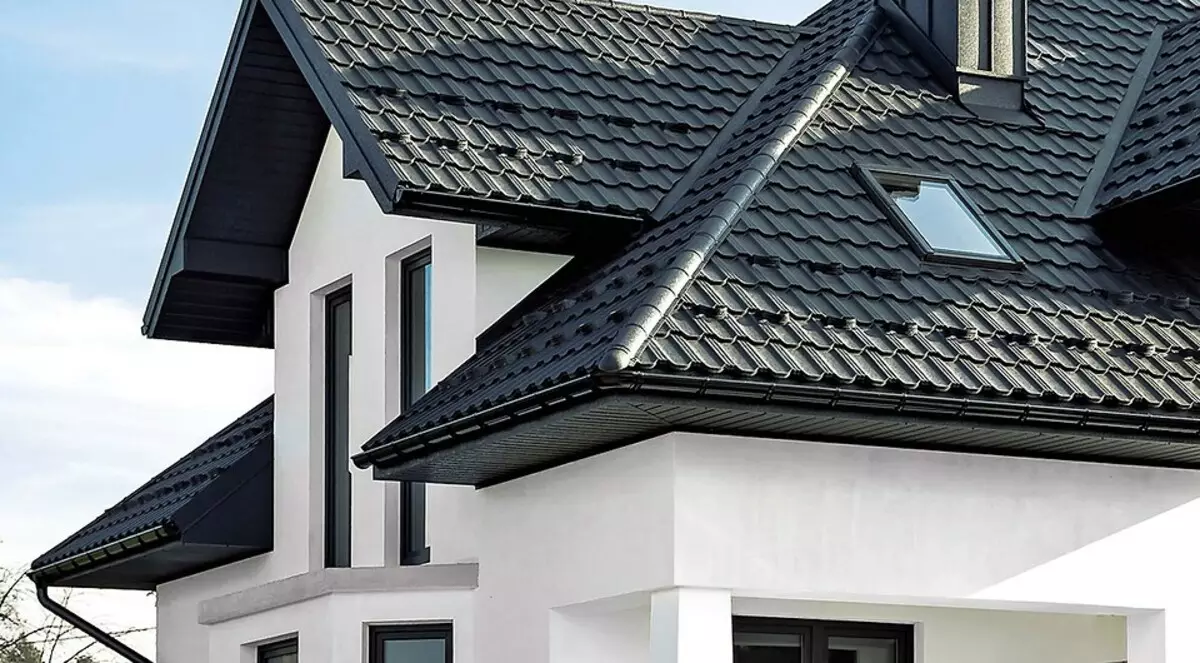
pros
- Serious and reliable.
- Water and frost resistant.
- High-quality materials have high corrosion resistance.
- It has a small mass of 4-7 kg / m².
- Simple in installation.
- It has a democratic cost.
- It has an attractive appearance.
- Fireproof.
- Manufacturer's warranty for a period of 15-30 years.
Minuses
- Restrictions at the minimum corner of the roof slope.
- Weak noise insulation.
- High thermal conductivity.
- A large amount of waste when installing on the roofs of complex configurations.
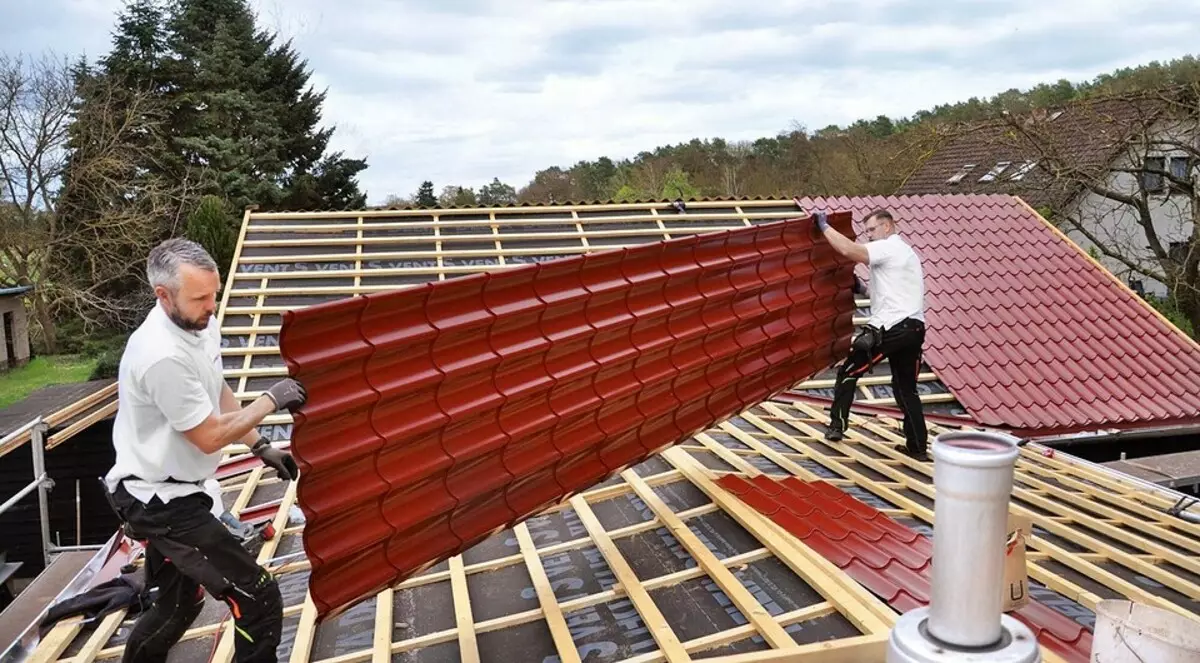
Move the metal tile is needed in the shoe soft rubber sole. Put the leg not on the crest of the wave, but in the deflection
Roofing of hard bitumen sheets
Bituminous profiled roofing sheets are often referred to as "erectifier" for the external similarity with color asbestos-cement sheets. In fact, they are compressed in a homogeneous mass of cellulose fibers impregnated with bitumen. The average size of the sheet - 2000 × 1000 mm, thickness - 3 mm. A wavy form gives them extra rigidness. The mass of 1 m² of the roof is only 6.5 kg, which is 4 times less than that of slate. In our market there are hard bitumen materials Aqualine, Gutta, Onduline, Ondura. Price 1 m² - from 150 to 300 rubles.
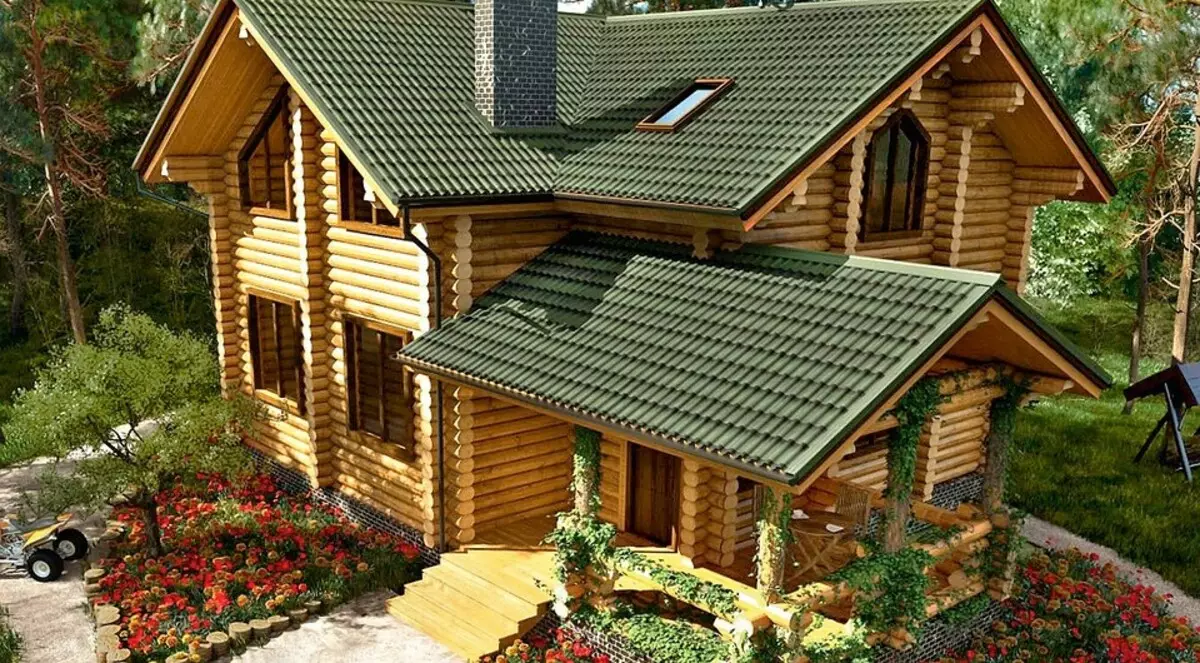
Sheet "Ondulina" can withstand loads up to 960 kg / m², and this is approximately 3 m3 of dense snow
Those who fear the flammability of bituminous sheets will explain that they will not ignite from the random spark or the uninterested cigarette, but with a debt effect of the flame, the material will light up. Mount this type of roof The manufacturers are recommended at a plus temperature, but not higher than 30 ° C. The cost of work is from 150 rubles. For 1 m².
pros
- Water and frost resistant.
- Have a small mass.
- Possess low thermal conductivity, help keep warm in the house.
- They are distinguished by good soundproofing qualities, they muffle the noise of rain.
- Fasten enough and reliable.
- Have a democratic value.
- Simple in installation.
Minuses
- Sheets are fragile, transportation and installation require careful and accurate circulation.
- Some restrictions when displacements on the roof.
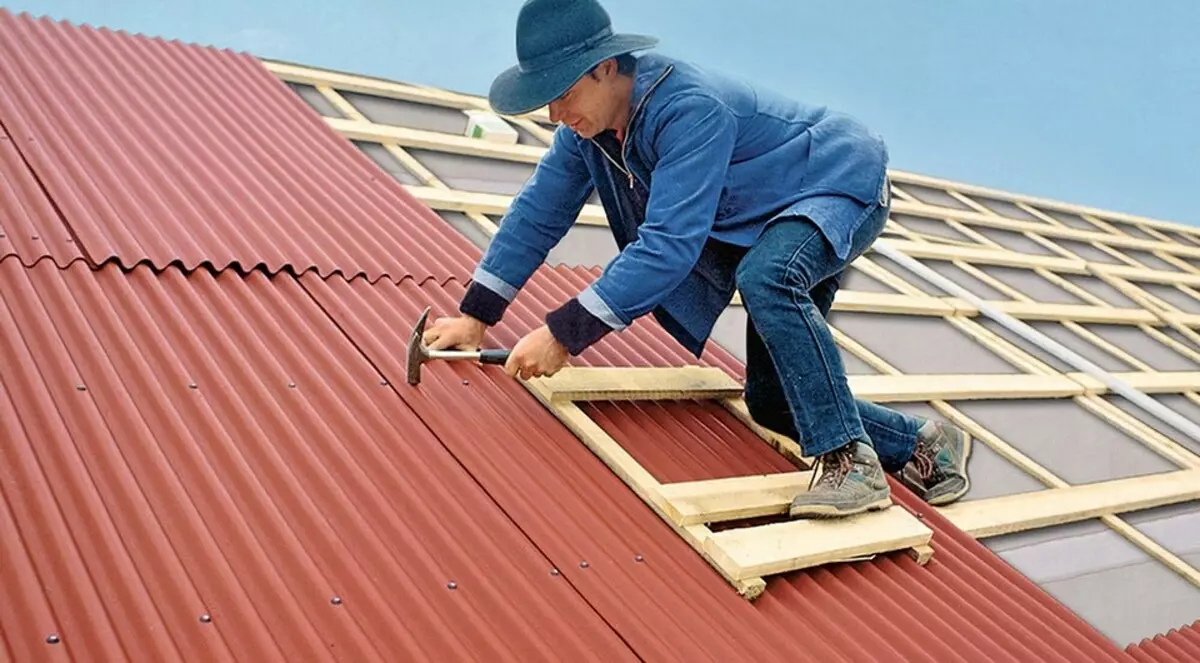
During the mounting on the heat under the sun, bitumen sheets softened and can change the form when too dense fasteners
Blender of flexible bituminous tiles
Flexible plates (gears) bituminous tiles consist of glass cholester, which is covered with a special bitumen mixture from two sides. Bottom - layer of adhesive composition, top - sprinkle from colored stone crumb. The dimensions of the shingles are small - 1000 × 330 mm. On one of their edges, curly cuts of different shapes are made. Therefore, it seems that the finished roof consists of rectangles, ovals, triangles, hexagons, etc. Cost 1 m² coating - from 235 to 4 thousand rubles, installation - from 300 rubles. For 1 m².
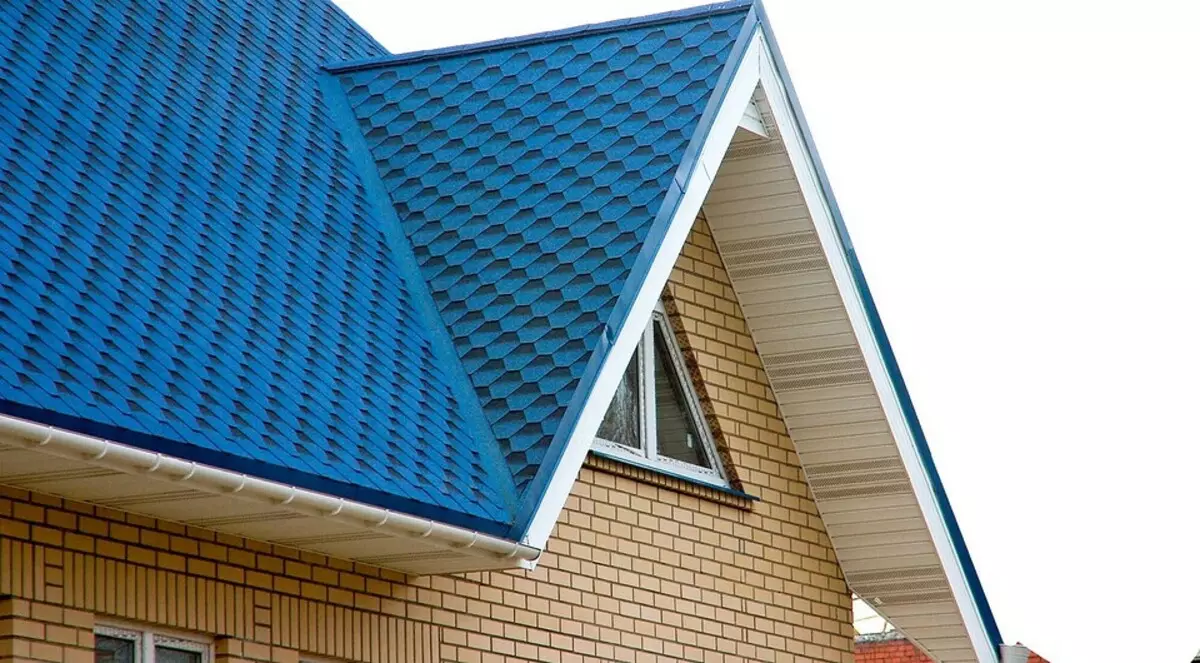
To the roof serve for a long time and reliably, it is worth making the service life of the material and components and choose the most durable
Flexible bituminous tile release Technonikol (Shinglas trademark), Certainteed, Döcke, Katepal, Tegola. The main condition for laying is the presence of a continuous base from oriented-chipboard (OSP-3), plywood of increased moisture resistance, as well as t-shirt or edged boards. With a small weight of the material itself (1 m² - 5-8 kg), the total mass of the design is quite impressive.
Along with a single-layer bituminous tile, some companies produce multilayer, gluing two or three shingles. It is thicker and stronger single-layer. It is difficult to damage and pierce. Such a roof without losses tolerates even a hurricane wind, dangerous for sheet iron, metal tile, erector.
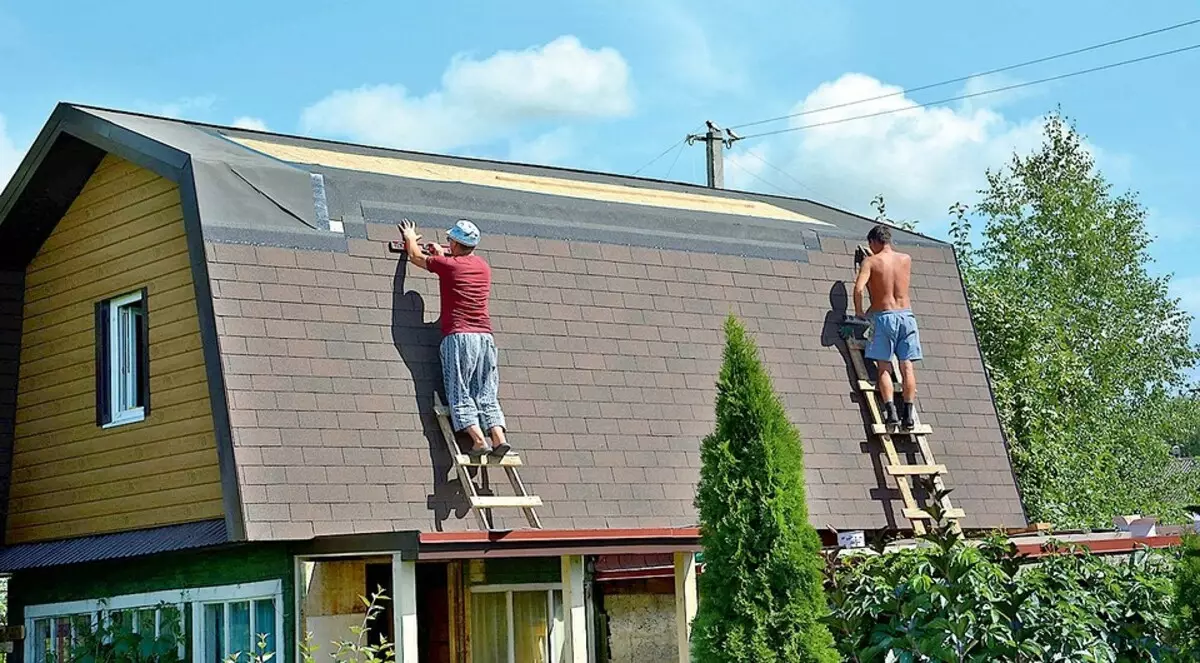
Be vigilant: if as the base under the flexible tile of the Nastya-pour the non-fatty OSP, it can prematurely collapse
pros
- Serious and reliable.
- Water and frost resistant.
- It has good sound insulation qualities, muffles the noise of rain.
- Simple in installation.
- Covers roofs of any complexity and configuration with a minimum amount of waste.
- It has an attractive appearance.
- Sufficient service life.
- The rough surface prevents the avalanche-like snow.
- Maintainability, permissible to restore the coating at local injuries.
Minuses
- Restrictions at the minimum corner of the roof slope.
- The need for solid dohes.
- Pretty impressive mass of the entire roofing system (10-25 kg / m²).






